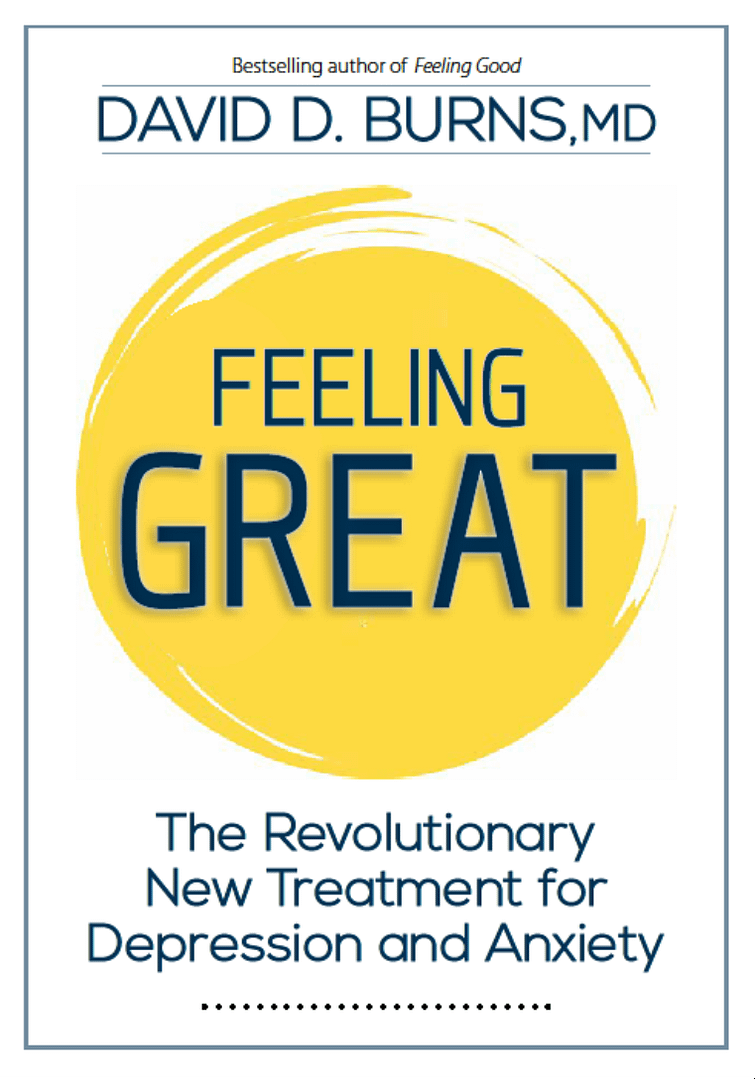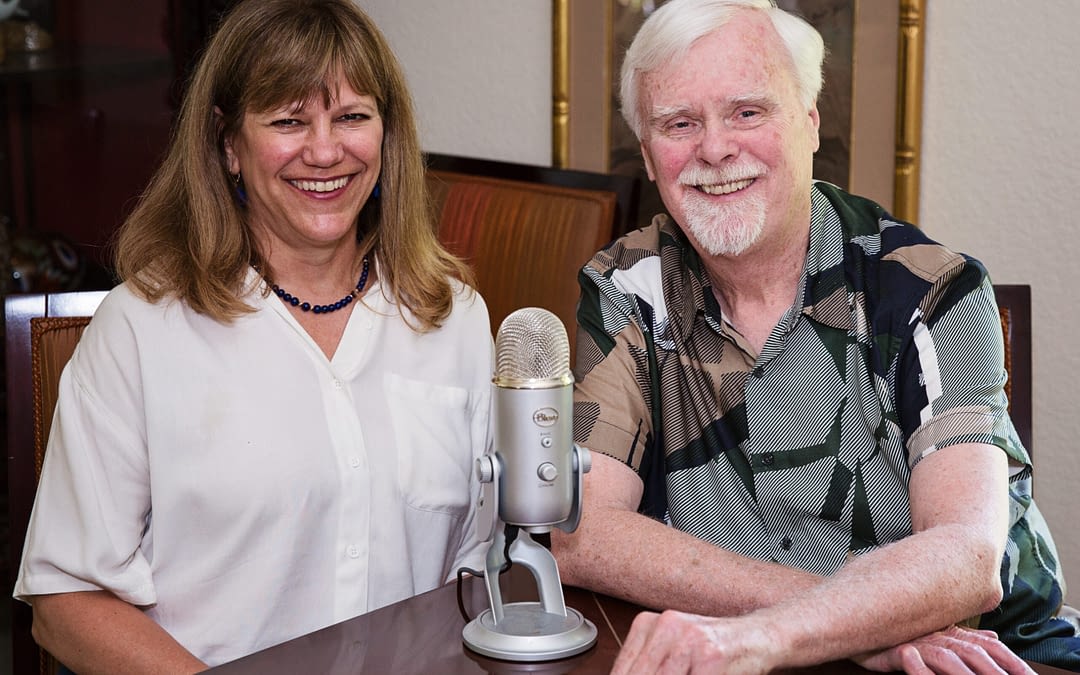Podcast 221 Ask David December 21, 2020
Today’s Ask David features five challenging questions submitted by listeners like you!- Sumaya asks: I recently bought Feeling Great and can’t find the chapters on Habits and Addictions in the book. Could you please clarify?
- Jay asks: Can you provide more specific information on the contrasts between Feeling Good, The Feeling Good Handbook, and Feeling Great?
- Rizwan asks: How would you use the Five Secrets to respond to a truly irate patient?
- Casey asks: How do you treat resistant autism patients with All-or-Nothing Thinking?
- Debby asks: What’s your definition of a violent person?
* * *
- Sumaya asks: I recently bought Feeling Great and can’t find the chapters on Habits and Addictions in the book. Could you please clarify?
* * *
- Jay asks: Can you provide more specific information on the contrasts between Feeling Good, The Feeling Good Handbook, and Feeling Great?
Thanks, I DO meander! Both a curse and a blessing, as my mind works like that, with new ideas popping in all the time.
First, here are the differences between the three books:
Feeling Good is a beautiful presentation of the basics of cognitive therapy, including how to crush distorted thoughts and modify self-defeating beliefs like the Achievement, Love, and Approval Addictions, as well as Perfectionism and Perceived Perfectionism. The books focuses on depression, including suicidal urges. This book was published in 1980 and has sold more than 4 million copies worldwide. It has received a number of awards and has been named the top depression self-help book, from a list of 1,000 books, by American and Canadian mental health professionals.
The Feeing Good Handbook has more exercises and a broader range of topics, including depression, anxiety, and relationship problems, as well as a special section for therapists on how to help challenging, difficult patients. This book was published in 1988 and has sold roughly two million copies.
Feeling Great was published in September of 2020. It updates all the tools and techniques in the prior two books, but also includes powerful new techniques to overcome therapeutic resistance. It also includes a section on more spiritual (but still practical) techniques, including the four “Great Deaths” of the self.
Feeling Great has a special section on how to crush each of the ten cognitive distortions, plus many real case examples with links to the actual therapy that you can hear online in my Feeling Good Podcasts. This is important because some readers may not believe that people with chronic and severe depression and anxiety can recover more or less completely in a single, two-hour therapy session.
Toward the end there of Feeling Great there is a special chapter by the famed neuroscientist, Professor Mark Noble from the University of Rochester, on how TEAM quickly modifies specific circuits in the brain to achieve ultra-rapid recovery.
The stance of the therapist has changed significantly in Feeling Great, as compared with the earlier books. Instead of trying to “help,” the therapist becomes the voice of the patient’s subconscious resistance, and makes the patients aware that their symptoms of depression and anxiety are not the result of what’s wrong with them, like a “chemical imbalance in the brain,” or a “mental disorder” described in the DSM, but rather what’s right with them. And the moment the patient suddenly “sees” this, recovery ill be just a stone’s throw away.
Feeling Great was based on 40 years of research on how psychotherapy actually works and more than 40,000 hours of therapy with depressed and anxious individuals, including many with severe and chronic problems. TEAM is not a new school of therapy, but a structure for how all therapy works.
* * *
- Rizwan asks: How would you use the Five Secrets to respond to a truly irate patient?
David and Rhonda emphasize the importance of session by session testing so this unfortunate situation does not develop, and role play how to respond effectively using the Five Secrets. The importance of the Disarming Technique is highlighted, and training methods are illustrated, along with the philosophy of “learning through failure” or “joyous failure.”
* * *
- Casey asks: How do you treat resistant autism patients with All-or-Nothing Thinking?
Hi Casey,
Thanks, I can include this in an Ask David, and you might also want to try out one of the introductory 12 week TEAM classes sponsored by FGI, feelinggoodinstitute.com, as a lot of practice is usually needed to grasp and implement techniques and ideas that might seem simple. I do not ever treat people against their will, who are involuntary. This is not treatment in my opinion, and is rarely or never effective. However, I would offer to treat the parents if they wanted help with parenting skills for the child.
Also, you might want to check out the podcast on the best techniques to treat AON! Use search function on my website.
All the best, david
David D. Burns, M.D.
David and Rhonda talk about techniques to combat All-or-Nothing Thinking as well as how to set the agenda and sit with open hands with patients who are in therapy involuntarily.* * *
- Debby asks: What’s your definition of a violent person?
Hi Debby,
You may be trying to define something that does not exist. Violent urges exist in varying degrees at varying times in all human beings. Violent thoughts, feelings, urges and actions exist. But a “violent person” does not exist. My thinking only, and many will undoubtedly “violently” disagree, and not even comprehend, perhaps, what I am saying. Humans have a dark side, and the extent is on a bell-shaped curve.
The denial of the dark side is arguably worse than the dark side, since violence is generally carried out in the guise of some religious principle, or some kind of “truth.”
david
Hope you enjoyed today’s podcast! Rhonda and David You can reach Dr. Burns at david@feelinggood.com. Dr. Rhonda Barovsky practices in Walnut Creek, California, but due to Covid-19 restrictions is working via Zoom, and can be reached at rhonda@feelinggreattherapycenter.com. She is a Level 4 Certified TEAM-CBT therapist and trainer and specializes in the treatment of trauma, anxiety, depression, and relationship problems. Check out her new website: www.feelinggreattherapycenter.com This is the cover of my new book, Feeling Great. The kindle is available now, too, and the audio version may be available by the time you read this!


